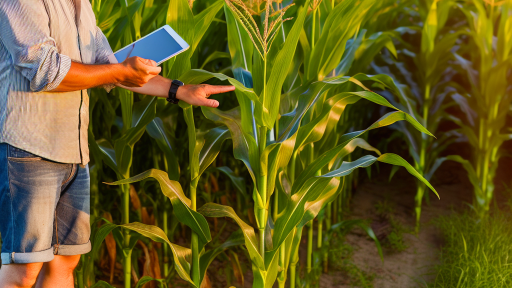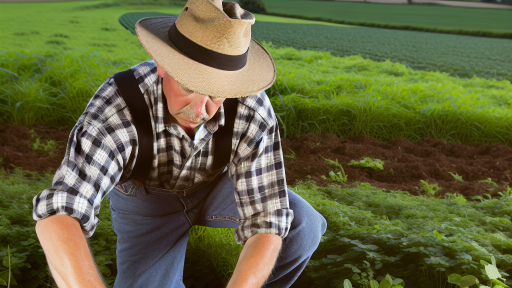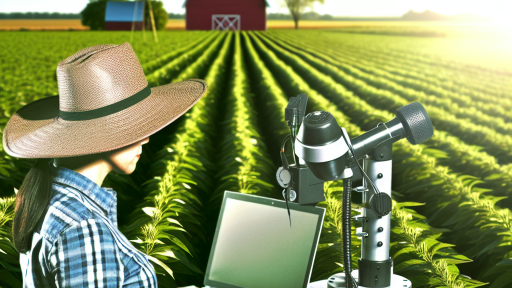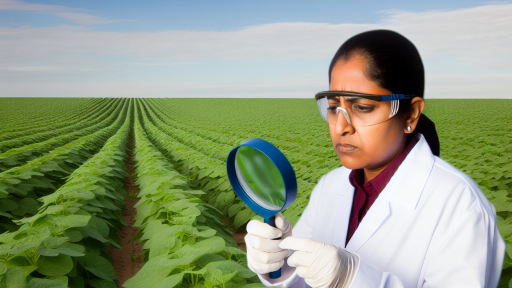Introduction to Precision Agriculture
Precision agriculture represents a transformative approach for modern farming.
It integrates advanced technologies to optimize crop production.
Farmers can significantly improve efficiency and sustainability through this method.
Moreover, precise data allows for tailored agricultural practices.
Understanding Precision Agriculture
This approach utilizes data-driven techniques for decision-making.
Farmers collect and analyze information from various sources.
These sources include satellite imagery, drones, and sensor technologies.
Consequently, farmers can identify and address specific issues efficiently.
Benefits of Precision Agriculture
Precision agriculture offers numerous advantages for farmers today.
Firstly, it enhances crop yields by optimizing resources.
Secondly, it reduces waste by applying inputs only when necessary.
This practice leads to lower costs and increased profitability.
Additionally, it promotes environmental conservation and biodiversity.
Technological Innovations
Various technologies drive the success of precision agriculture.
GPS technology provides accurate location data for field mapping.
Transform Your Agribusiness
Unlock your farm's potential with expert advice tailored to your needs. Get actionable steps that drive real results.
Get StartedDrones offer real-time monitoring capabilities across large areas.
Moreover, soil sensors help determine hydration and nutrient levels.
These innovations collectively support informed farming decisions.
Case Studies in Precision Agriculture
Many farmers have successfully implemented precision agriculture techniques.
For instance, Rebecca Hurst utilizes drones for crop surveillance.
Her farm experiences improved yield forecast accuracy and disease detection.
Similarly, Green Fields Farms employs soil sensors for targeted irrigation.
This strategy has reduced water usage by 30% while maintaining crop health.
The Role of GPS Technology in Precision Agriculture
Introduction to GPS in Agriculture
GPS technology revolutionizes modern farming practices.
It enhances accuracy in field operations.
Farmers use GPS for precise mapping and field analysis.
Mapping Fields
Mapping fields is the first step in precision agriculture.
GPS allows farmers to create detailed maps of their land.
These maps show variations in soil types and moisture levels.
Farmers can visualize crop health and nutrient needs accurately.
Field Analysis
Field analysis utilizes GPS data for informed decisions.
This analysis helps identify areas needing attention.
Farmers can monitor crop performance over time.
They can adjust their management practices accordingly.
Enhanced Crop Management
GPS technology supports enhanced crop management techniques.
Farmers can implement variable rate applications effectively.
These applications optimize inputs based on field variability.
Consequently, this results in higher yields and reduced waste.
Data Collection and Management
Data collection is vital for successful precision agriculture.
Showcase Your Farming Business
Publish your professional farming services profile on our blog for a one-time fee of $200 and reach a dedicated audience of farmers and agribusiness owners.
Publish Your ProfileGPS-equipped devices collect real-time data from fields.
This data aids in monitoring weather patterns and soil conditions.
Farmers can use this information to make timely decisions.
Collaboration with Technology Providers
Farmers often collaborate with technology providers for GPS solutions.
These partnerships enhance the effectiveness of precision agriculture.
Providers can offer training and support for new technologies.
Farmers benefit from knowledge and resources that improve outcomes.
Utilizing Drones for Crop Monitoring
Benefits of Drone Technology
Drones enhance crop monitoring efficiency significantly.
They cover large areas quickly, saving time for farmers.
Additionally, drones provide real-time data on crop health.
This allows for quick decision-making and targeted actions.
Moreover, drones reduce the need for labor-intensive field inspections.
They also minimize disruption to the crops during monitoring.
Finally, this technology can improve overall yields and profitability.
Best Practices for Using Drones
Choosing the right drone model is crucial for success.
Farmers should consider payload capacity and flight time.
Next, they must ensure compliance with local regulations.
Hiring or training a qualified pilot enhances safety and efficiency.
Using drones for specific tasks can maximize their utility.
For example, farmers can map fields, assess irrigation needs, and evaluate crop maturity.
Regularly maintaining drone equipment extends its lifespan and performance.
Lastly, analyzing the collected data effectively informs farm management practices.
Real-World Applications
Many farmers are already reaping the benefits of drone technology.
For example, Greenfield Farms uses drones to monitor soil moisture levels.
They adjust irrigation scheduling based on real-time insights.
Another example includes Harvest Air, which employs drones for pest detection.
This proactive approach minimizes pesticide use, benefiting the environment.
Additionally, aerial imagery helps farmers identify nutrient deficiencies early.
In this way, they can apply fertilizers more effectively.
Overall, these applications show how drones revolutionize agriculture.
Learn More: Implementing Quality Control in Post-Harvest Steps
Soil Health Assessment Techniques
Sensors for Soil Health
Modern sensors play a crucial role in assessing soil health.
They provide real-time data on soil moisture and temperature.
Additionally, sensors can measure nutrient levels and pH balance.
Farmers can utilize this data to make precise decisions.
This technology helps in optimizing crop yields significantly.
Soil Sampling Methods
Soil sampling remains a tried and tested method for assessment.
Farmers often take samples from various field locations.
This ensures a comprehensive understanding of soil conditions.
Laboratories analyze the samples for nutrient composition.
Showcase Your Farming Business
Publish your professional farming services profile on our blog for a one-time fee of $200 and reach a dedicated audience of farmers and agribusiness owners.
Publish Your ProfileOverall, sampling provides valuable insights for soil management.
Integrating Technology with Traditional Methods
Combining sensor data with traditional sampling enhances accuracy.
This hybrid approach offers a more detailed soil profile.
Farmers can identify trends and make informed adjustments.
Moreover, it allows for better resource allocation.
The integration of both methods leads to sustainable farming practices.
Beneficial Outcomes of Soil Health Assessment
Regular assessments improve soil fertility over time.
This leads to increased crop quality and yield.
In addition, healthier soil supports biodiversity in farm ecosystems.
Farmers also experience reduced costs related to fertilizers.
Ultimately, enhanced soil health promotes long-term farm sustainability.
Find Out More: Temperature Control Strategies for Storage Facilities
Variable Rate Technology (VRT): Customizing Inputs for Optimal Crop Yield
Overview of Variable Rate Technology
Variable Rate Technology (VRT) revolutionizes modern agriculture.
It tailors the application of agricultural inputs like seeds and fertilizers.
Farmers use VRT to optimize crop yields efficiently.
This technology leverages data for precise field management.
Ultimately, it enhances both productivity and sustainability.
Benefits of VRT
VRT reduces input costs significantly.
Farmers apply only what is needed, preventing waste.
It boosts crop health through tailored nutrient delivery.
Additionally, it minimizes the environmental impact of farming.
As a result, farmers can achieve better economic returns.
Implementation of VRT
To implement VRT effectively, farmers need specific tools.
First, they require GPS technology for accurate mapping.
Next, soil sensors help in assessing field variability.
Farm management software is crucial for data analysis.
Lastly, collaboration with agronomists enhances decision-making.
Case Studies of Successful VRT Adoption
Farmers across the globe successfully utilize VRT.
For example, Clara Mitchell improved her corn yields by 15%.
She adopted VRT on her Illinois farm last year.
Another case involves Greenfield Farms in Iowa.
They recorded significant cost savings through optimized input applications.
These case studies showcase VRT’s practical advantages.
Future of Variable Rate Technology
The future of VRT looks promising and innovative.
Emerging technologies like AI will enhance data processing.
Integrating drones can further improve field monitoring.
Moreover, advancements in weather forecasting will aid in input timing.
The ongoing evolution of VRT will continue to benefit farmers.
See Related Content: Sustainable Farming Through Advanced Crop Monitoring
Data Management in Precision Agriculture
Importance of Data Management
Data management is vital for successful precision agriculture.
Showcase Your Farming Business
Publish your professional farming services profile on our blog for a one-time fee of $200 and reach a dedicated audience of farmers and agribusiness owners.
Publish Your ProfileFarmers rely on accurate information to make informed decisions.
This practice enhances crop yields and resource efficiency.
Moreover, it helps in addressing environmental concerns.
Types of Data Collected
Farmers gather various types of data throughout the farming process.
Soil moisture levels are crucial for water management.
Weather data assists in predicting crop conditions and growth.
Crop yield data identifies areas for improvement.
Additionally, pest and disease reports help control outbreaks.
Analyzing Data Effectively
Farmers must analyze data to derive actionable insights.
Big data analytics tools can process large datasets efficiently.
Visualization techniques help farmers understand trends and patterns.
For instance, heat maps display soil nutrient distribution.
Interactive dashboards allow real-time monitoring of key metrics.
Translating Analysis into Action
Data interpretation is a critical step in decision-making.
Farmers should convert insights into specific actions.
For example, targeted irrigation can optimize water usage.
Moreover, crop rotation schedules can enhance soil health.
Fertilization strategies must align with nutrient availability data.
Challenges in Data Management
Several challenges can affect effective data management.
Data accuracy is crucial for reliable outcomes.
Integrating different data sources can be complex.
Additionally, technology adoption varies among farmers.
Future Trends in Data Management
The future holds exciting possibilities for data management in agriculture.
Artificial intelligence is set to revolutionize data analysis.
Farmers will increasingly rely on machine learning algorithms.
These advancements will enable predictive analytics for better planning.
Ultimately, data-driven decisions will lead to sustainable farming practices.
Discover More: Organic Amendments to Enhance Soil Quality
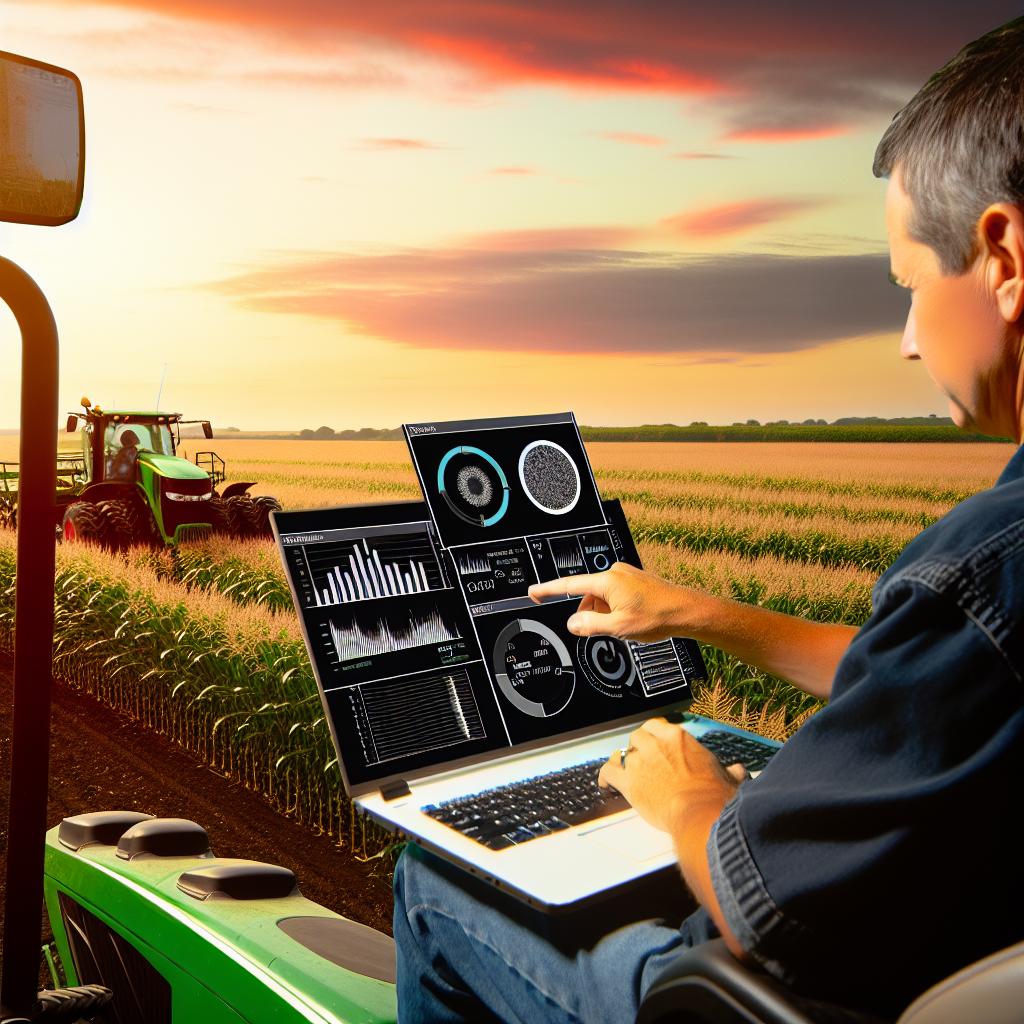
Integrating IoT Devices in Farming: Real-time Monitoring and Automation
Overview of IoT in Agriculture
IoT devices revolutionize modern farming practices.
They provide real-time data for better decision-making.
Farmers can utilize these devices to enhance productivity.
Moreover, IoT improves crop management and efficiency.
Types of IoT Devices
Several IoT devices serve various agricultural needs.
Sensors monitor soil moisture levels effectively.
Drones offer aerial imagery for crop health assessment.
Automated irrigation systems help conserve water resources.
Climate stations provide critical weather data for farmers.
Real-time Data Monitoring
Real-time monitoring ensures timely interventions.
This capability enhances yields while reducing waste.
Farmers can track variables like temperature and humidity.
Showcase Your Farming Business
Publish your professional farming services profile on our blog for a one-time fee of $200 and reach a dedicated audience of farmers and agribusiness owners.
Publish Your ProfileAdditionally, they can respond swiftly to environmental changes.
Automation and Efficiency
Automation streamlines numerous farming processes.
Farmers can schedule irrigation and fertilization remotely.
This technology minimizes the need for manual labor.
Consequently, farmers can focus on strategic planning.
Challenges of IoT Integration
Despite the benefits, challenges exist in IoT integration.
Cost remains a significant barrier for many farmers.
Additionally, data security poses risks to personal information.
Finally, the learning curve can hinder widespread adoption.
Future of IoT in Agriculture
The future holds immense potential for IoT in farming.
Advancements in technology will lower costs and increase accessibility.
As a result, more farmers will adopt these innovative solutions.
Ultimately, IoT will pave the way for smarter agricultural practices.
Case Studies: Successful Implementation of Precision Agriculture Techniques
Introduction to Successful Cases
Several farmers have adopted precision agriculture techniques with great success.
These cases illustrate the benefits and strategies of modern farming methods.
Each story provides insights into real-world applications and outcomes.
Example of a Vineyard
La Belle Vineyards in California adopted precision irrigation methods.
They utilized soil moisture sensors to monitor irrigation needs.
This reduced water usage by 30% while maintaining grape quality.
Additionally, they saw a 15% increase in yield after the improvements.
Success in Crop Farming
Greenfields Farms in Iowa implemented variable rate planting.
This technology allows farmers to plant seeds at varying densities.
By analyzing soil health data, they optimized their crop yields.
As a result, they increased their corn production by 20%.
Precision Agriculture in Livestock Management
Sunny Acres Ranch invested in GPS tracking for their cattle.
This technology helps monitor grazing patterns and movement.
It resulted in improved pasture management and livestock health.
Furthermore, the ranch reported reduced feed costs by 25%.
Expanding Knowledge and Sharing Results
Farmers attending workshops learned about these successful strategies.
Sharing experiences enabled them to apply similar techniques on their farms.
This collaboration fosters innovation and promotes sustainable practices.
Challenges and Limitations of Precision Agriculture
Technological Barriers
Many farmers face significant technological barriers when adopting precision agriculture.
The cost of advanced equipment can be prohibitive for small-scale operations.
Additionally, a lack of technical know-how can hinder effective implementation.
Farmers may also struggle with integrating new technologies into existing practices.
As a result, some potential users may feel overwhelmed by the complexity of systems.
Data Management Issues
Effective precision agriculture relies heavily on data collection and analysis.
Farmers often face challenges in managing large volumes of data.
Interpreting and acting on data can be daunting without proper training.
Moreover, data privacy concerns may discourage farmers from fully utilizing available technology.
Showcase Your Farming Business
Publish your professional farming services profile on our blog for a one-time fee of $200 and reach a dedicated audience of farmers and agribusiness owners.
Publish Your ProfileEnsuring data accuracy and usability remains a critical challenge.
Economic Considerations
The economic feasibility of precision agriculture can be a deterrent for many farmers.
Initial investment costs can be substantial, even with potential long-term savings.
Furthermore, uncertain market conditions may affect the willingness to invest in new methods.
Many farmers worry about the return on investment and profitability.
Budget constraints often limit the adoption of innovative farming practices.
Resistance to Change
Farmers often encounter resistance to changing traditional practices.
Established routines can cause reluctance to adopt new techniques.
Cultural and generational factors can also play a role in this resistance.
Many individuals prefer familiar methods over adopting new and unknown technologies.
As a result, education and training become essential for promoting change.
Environmental Factors
Environmental conditions can impact the success of precision agriculture initiatives.
Different regions may require distinct approaches to precision practices.
Weather variability can also influence the effectiveness of technology applications.
Moreover, soil conditions may not always accommodate high-tech solutions.
Farmers must be adaptable in the face of unpredictable natural elements.
Future Trends in Precision Agriculture
Innovative Data Analytics
Data analytics is revolutionizing precision agriculture.
Farmers now use sophisticated tools for data collection.
Machine learning algorithms help optimize farming practices.
This leads to improved crop yields and reduced waste.
Automated Agriculture Equipment
Automation continues to change farming operations dramatically.
Robots handle tasks like planting and harvesting efficiently.
Drones monitor crop health and pinpoint issues quickly.
Farmers can respond faster to changing environmental conditions.
Sustainable Practices through Technology
Emerging technologies promote sustainable farming practices.
For instance, precision irrigation reduces water usage significantly.
Soil sensors provide real-time data on nutrient levels.
These advancements help farmers use resources more responsibly.
Integration of IoT Devices
The Internet of Things (IoT) is reshaping agricultural landscapes.
Farmers connect devices for seamless operation management.
Irrigation systems automatically adjust based on weather data.
Farm management software aggregates data for better decision-making.
Vertical Farming Innovations
Vertical farming uses space efficiently in urban environments.
It minimizes the need for pesticides and fertilizers.
This method relies heavily on smart technology for monitoring.
Urban populations benefit from locally grown produce.
Additional Resources
Vantage Market Research: Precision Farming Market Growing at …

